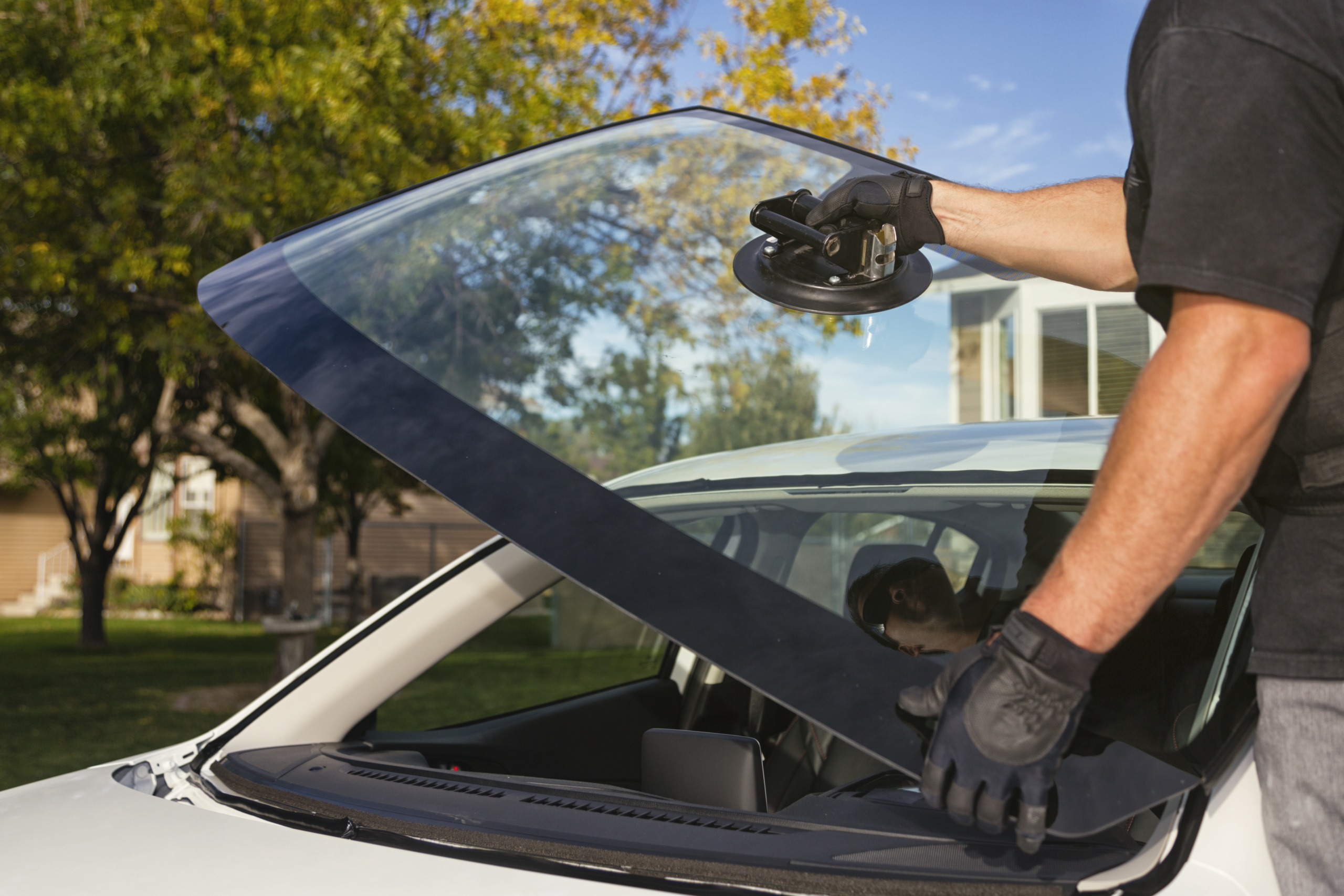
America needs a “roads review”
Wales took a hard look at its highway program and made an abrupt U-turn. The U.S. should follow.

In February, the government of Wales announced that it was scrapping all major road-building projects. The move came after a year-long “roads review” in which a government-appointed panel systematically reviewed the nation’s road-building program in light of its climate and environmental goals.
To an American steeped in our highway-happy, boondoggle-building transportation policy system, the summary of the roads review reads like something out of a particularly good fantasy novel:
The climate and nature emergencies have formed the backdrop to our discussions. Our terms of reference make clear that in future, Welsh Government will avoid action that increases carbon emissions from constructing, operating, maintaining, and expanding the road network, especially in the next 15 years when most vehicles in use will be powered by fossil fuels.
It gets even better. The roads review recommends that road projects only be built that serve one of four purposes:
- Shifting trips to sustainable transportation.
- “Reducing casualties where they are high, through small-scale changes.”
- “Adapting roads to the impacts of climate change.”
- Providing access to development sites that will achieve high mode share for sustainable modes of transportation.
Not only that, but projects designed to achieve those purposes should only move forward if they minimize carbon emissions in construction, do not increase vehicle speeds, do not increase capacity for cars, and do not harm important ecological sites. The review panel then evaluated every proposed highway investment on the government’s list according to those criteria.
It is hard to imagine any U.S. government – even the most climate-conscious – articulating such a clear direction for transportation policy and actually putting its money (OK, our money) where its stated values and priorities are.
To imagine doing so feels radical. But it’s actually common sense.
Meeting America’s climate obligations will require us to take on our number one source of greenhouse gas emissions: transportation. Continued road expansion makes that much harder to do. In the meantime, America faces a traffic safety crisis, with more than 40,000 of our fellow Americans dying on the roads each year. And our car-centric transportation system creates a host of other severe problems, harming our health, draining our wallets, and forcing many of us into car trips that leave us frustrated and miserable.
And yet, despite positive actions in some cities and states, and significant investment in public transportation under the Bipartisan Infrastructure Law, the main thrust of America’s transportation policy remains the same as it was generations ago: to build and expand roads and highways, while providing large and increasing levels of public subsidy to roads and driving.
It is not as though we don’t have the data to show that our current approach is doing us harm. We know that what we’re doing isn’t working. But we remain stuck, with public officials often resistant to the very idea that America’s transportation policy framework should change in any meaningful way.
Examples abound. When the Biden administration issued a memo suggesting that states should maybe, perhaps, pretty please consider possibly fixing the roads they already own before splurging on new boondoggle highway megaprojects – a common sense recommendation if there ever was one – it triggered a revolt by some states and members of Congress.
Meanwhile, decades after we learned of the dangers of climate change, governments at all levels still fail to fully and honestly assess the impact of our highway program on the climate. Some states, such as Colorado, are beginning to scrutinize proposed highway expansions with climate change in mind, but even the leading states have a long way to go. (A group of advocates are now pushing to change that historical pattern of ignorance by giving real teeth to the assessment of transportation impacts in reviews conducted under the National Environmental Policy Act.)
The track record of previous government-organized panels of transportation experts isn’t encouraging either. In 2019, a blue-ribbon panel convened by the Transportation Research Board issued a report calling for significant expansion of capacity of the Interstate Highway System. Tellingly, the chapter on “Climate Change and the Interstate Highway System” dealt barely at all with the impact of highway investment on climate change, but mostly with the future impacts of climate change and extreme weather on Interstate highways. [1] The report called for “renewing the national commitment to the Interstate Highway System” as if we served it, rather than it serving us.
If neither government officials nor hand-picked groups of the same old transportation experts are willing or able to boldly challenge the status quo, who will?
How about us?
By “us,” I mean the Americans – of whom there are millions – who experience the downsides of our current transportation policies on a daily basis, and the civil society leaders and experts working now to document those problems and envision bold solutions.
Imagine a kind of “people’s roads review” – a sweeping, unifying effort to focus the attention of the public, the media and decision-makers on the terrible problems caused by our current transportation system and perpetuated through transportation policy.
Imagine people displaced by unnecessary highway expansion projects testifying before the world about the homes they loved and lost – and the new possibilities for their communities that could be born if the worst of those highways were to go away. Imagine forums around the country in which climate scientists show how emissions from transportation will contribute to sea level rise and extreme weather, and where modelers share their data on the likely impacts of new highway expansion projects on the climate.
Imagine public health experts showing photos of lungs harmed by traffic air pollution and researchers sharing new data about the health impacts of traffic noise. Imagine victims of car crashes and their families testifying to the terrible consequences of the current system’s failure to keep its users safe. Imagine users of rural roads and residents of city neighborhoods speaking about how boondoggle highway megaprojects siphon funds away from basic local transportation needs like fixing potholes and improving sidewalks and bike paths.
Imagine experts in public finance talking about the fiscal challenges posed by auto-centric forms of development and the high cost of subsidizing roads and fuels (along with what else we could buy with the money we save). Imagine advocates for low-income Americans, disabled Americans, children and the elderly telling of the many ways our transportation system leaves them behind (or leaves them in crippling debt).
And on the flip side, imagine public health experts presenting data about the extensive health benefits of walking and biking, leaders from around the world sharing their successful experiences with freeway removal or bikeable and walkable cities, and advocates and experts in various forms of sustainable transportation – transit, bikes, e-bikes, micromobility, walking, you name it – coming together to share ideas and find ways to create a new way forward for transportation.
I can imagine some objections to this idea. One is that much of this is already happening. As I mentioned above, we already have the data and evidence to illustrate the scale of the transportation problem and to propose solutions. There are already many talented and committed advocates working at every level – from their own city blocks to the nation’s capital – to make change.
But a “people’s roads review” can address a few problems that sustainable transportation advocates face. The first is that while many of the critiques of our transportation system are not new, the ways in which we understand and express them tend to be siloed – climate activists over here, fiscal hawks over there, safety advocates over there. The parable of the blind men and the elephant applies – each of the advocacy communities working on transportation sees our small sliver of the problem but not the big common problem that unites them all.
We need to see the whole elephant. And show it to the American people.
Only by seeing the problem whole can we then begin to evaluate and understand just how far our current transportation policy system is from fulfilling our goals for a safer, healthier and happier world. Only then would it be possible to do what the Welsh roads review did – rigorously evaluate the kinds of projects we fund and the kinds of policies we adopt in line with our goals and values.
By putting America’s highway program on a kind of public trial, we might be able to break our concerns out of the often-stifling silo of “transportation policy” and into the public consciousness, to draw to them the level of attention they deserve in the same way that other citizen movements have done throughout recent history, both here and abroad.
The climate crisis and the safety crisis on our roads – together with the countless other big and small problems driven by our continued emphasis on cars and road-building – demand something bigger than what transportation advocacy has yet been able to deliver. We need a rallying point that knits small movements into a bigger one, that enables the whole to become greater than the sum of the parts, and that provides the public, the media and decision-makers with a common focal point for education, engagement and action.
A “people’s roads review” might not be enough to change the transportation conversation and put us on track to a better future. But it sure could be a start.
[1] The one exception is buried in a text box. “Inasmuch as the Interstate Highway System has facilitated low-density suburban development and reliance on automobiles, a transformation to a low- and no-carbon transportation system will increasingly mean that its planning is integrated with the planning of low-carbon mobility options, from public transit to zero-emission trucks.” Whatever you take that to mean.
Topics
Authors
Tony Dutzik
Associate Director and Senior Policy Analyst, Frontier Group
Tony Dutzik is associate director and senior policy analyst with Frontier Group. His research and ideas on climate, energy and transportation policy have helped shape public policy debates across the U.S., and have earned coverage in media outlets from the New York Times to National Public Radio. A former journalist, Tony lives and works in Boston.
Find Out More

TexPIRG fall update

Cars are lasting longer than ever. Will that change with new technologies?

As crashes rise, where should policy fall?

